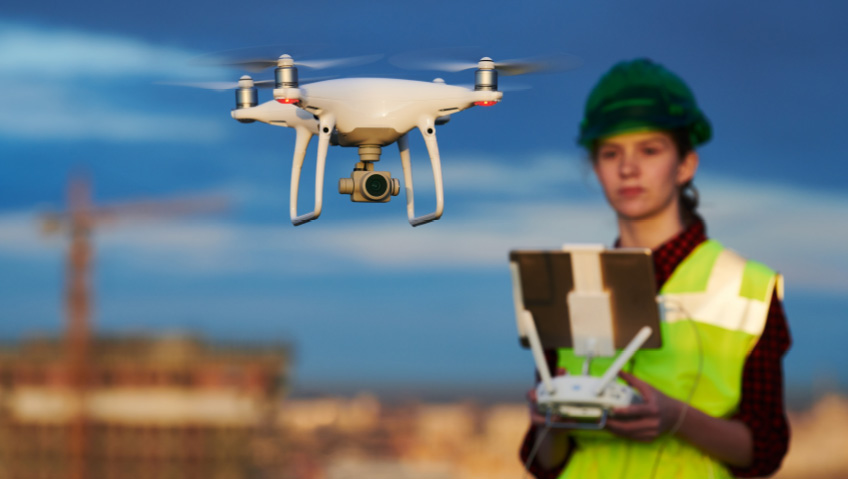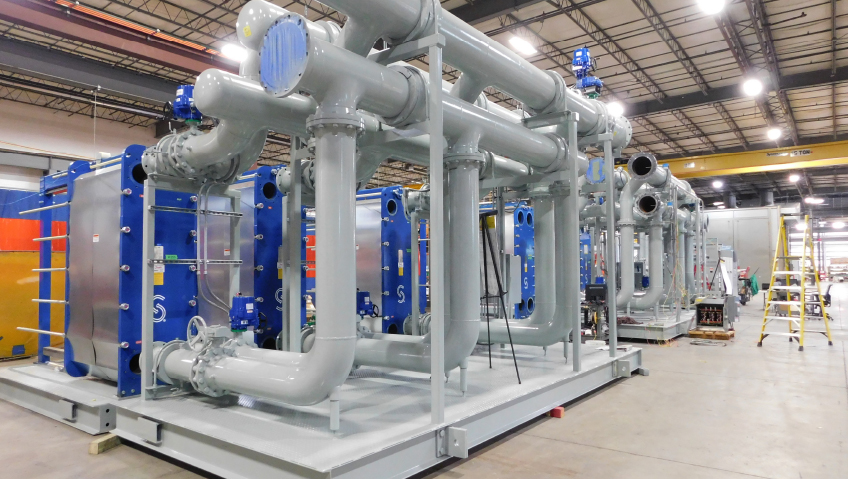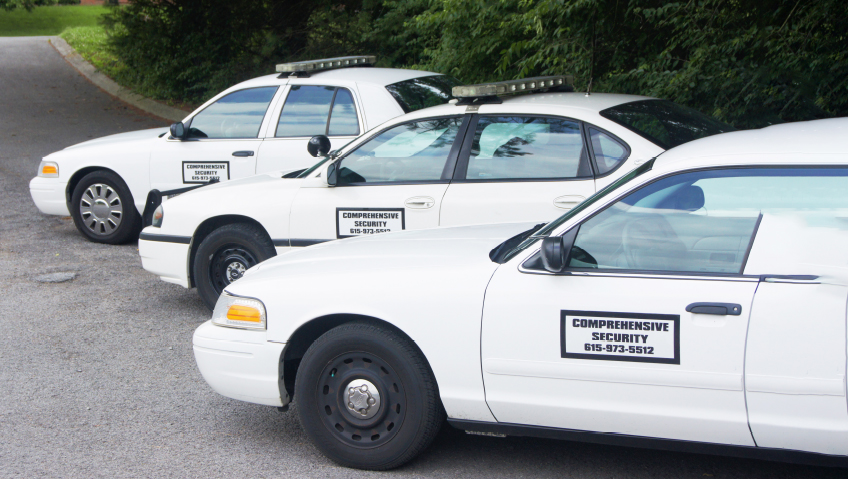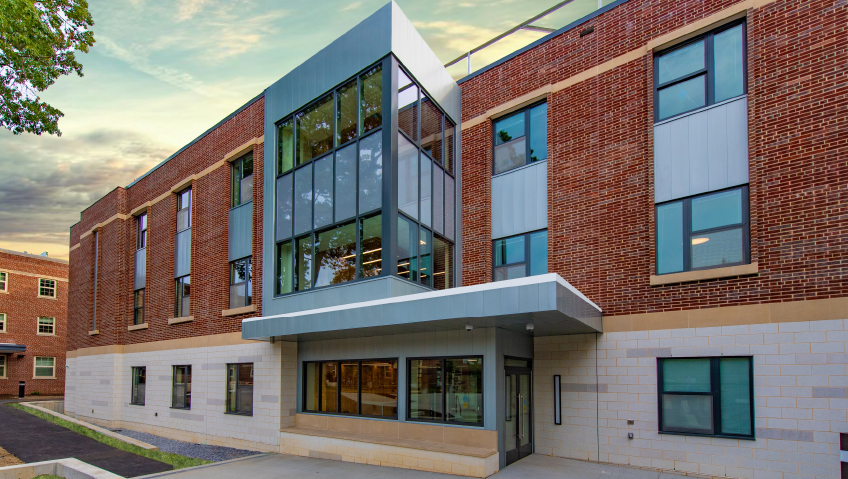From cutting costs to improving safety and efficiency, drones are making their presence known on construction sites worldwide.
Commonly known as drones, Unmanned Aerial Vehicles (UAVs) and Unmanned Aerial Systems (UASs) were out of public reach for decades. Originally reserved for the military, primitive drones emerged in the 1800s and were essentially explosive-filled balloons directed at the enemy.
During the First World War (1914-18) and World War Two (1939-45), advances in radio controls saw drones used to gather reconnaissance without putting human pilots in jeopardy or subjecting them to unnecessary fatigue. In time, drone use opened up to government agencies such as the United States Coast Guard for search and rescue operations, and utilities for inspecting pipelines in hard-to-access landscapes.
Becoming smaller, faster, and lighter in the 1970s, drones soon gained popularity in commercial sectors. No longer the domain of the military or wealthy hobbyists, drones today are used by television stations, movie-makers, emergency conservation authorities to monitor wildlife, and for many other purposes including construction, where they are proving themselves to be a valuable and cost-effective tool.
Keeping tabs
One of the earliest sectors to embrace drone technology was construction.
Used by superintendents, technology managers, project managers and others, drones are regularly on job sites collecting data, tracking construction progress, and using GPS to precisely map areas and create 3D models. By gathering aerial data in real time, drones prevented potentially expensive mistakes; in fact, some contractors have reported cost and time improvements of 75 percent and greater, thanks to drones.
Drones boast many benefits, one of the greatest being on-board cameras. No longer limited to blurry still images of the past, today’s drones have stabilizers and capture high-resolution photos, video, and data.
While drones keep proving their worth as an investment during all stages of the building process – from initial surveying through construction and completion – they are also making job sites safer. Instead of hauling out ladders or erecting scaffolds and putting themselves at risk while inspecting rooftops, construction crews are using drones to do the job for them, checking for potential issues via cameras.
As an added benefit, drone photos captured from above are also being used to create budget-friendly marketing materials for buildings under construction, such as condominiums.
Buzzing over the building
In the past, mapping massive construction projects such as apartment complexes or multi-acre shopping mall developments was a lengthy and expensive process requiring pilots, a helicopter or small plane flying overhead, and a photographer taking aerial images.
Thanks to drones, massive sites can now be surveyed, documented, and photographed in a short time and at a fraction of the cost of hiring a pilot and plane. And since bird’s-eye views are captured in real time and viewed by workers on the ground, any issues affecting the construction process can be addressed immediately.
Construction companies and their clients benefit. Instead of describing how a project is progressing or just taking just ground-level photos, customers can monitor jobs under construction for themselves through images, videos, and by zooming in on GPS points on detailed maps. This not only reveals how much work has been completed, but the amount that still needs to be done, which is valuable for budgeting and timelines, especially after significant storms and rain which can set projects back by days or even weeks.
A drone for the job
With the myriad available types and price points of drones, the sky’s the limit.
As with all construction equipment investments, it is important to create a checklist of wants and needs before purchasing. While entry-level hobby drones can be had for $100, they are best suited to beginners wanting to get a ‘feel’ for basic controls.
Once in the $1,000 to $2,000 range, drones come with higher resolution cameras, offering sharper images and videos. Entering the $10,000 and up price tag sees quality and features increase significantly, including encrypted data security, automatic dual band switching, superior-quality cameras, GPS modules, and other systems improving accuracy.
However, cost is not the only consideration. Types of construction drones vary, with some better suited for specific purposes than others. Rotary wing drones – the style favoured by hobby enthusiasts – boast four to eight propellers, offering precise controls while in flight, and make take-off easy.
Fixed wing drones, which resemble small airplanes, are known for their long range abilities and endurance, while hybrid drones are a combination of rotary and fixed wing. Depending on the drone and lift capacity, they can be equipped with high-resolution cameras, many sensors, and LiDAR, which uses laser to determine ranges.
Flying by the rules
As with all equipment, drones require training, skill, and abiding by rules and regulations as set forth by the Federal Aviation Administration (FAA) in the United States and Transport Canada, where all drones with a take-off weight of 8.8 ounces (250 grams) and over must be registered.
As with any technology, the laws regarding drone use keep changing as their popularity increases. In 2006, the Federal Aviation Administration (FAA) issued a permit for the first commercial drone. At the time, there was an average of just two permits per year. By 2016, however, the FAA was issuing over three thousand permits to commercial users, and the number keeps growing to this day.
With growing drone popularity use come not only practical considerations, but legal ones governing their proper use.
The American Bar Association (ABA) has a section on its website, Use of Drones on Construction Projects: Legal and Contractual Considerations. The ABA highlights FAA regulations and legal aspects surrounding drone accidents, risk of injuries to persons or property, indemnities, liability, data collection and storage, and privacy.
Other areas must also be considered, such as obtaining written consent from workers and neighbours over privacy, and checking with collective bargaining agreements to see if there are restrictions about photographing and taping employees.
While some feel the construction industry is historically resistant to change, the opposite holds true with the industry’s enthusiastic embrace of drones. In just a few years, technology has seen drones become even more useful, with additional sensors, the ability to carry heavier payloads, longer battery life resulting in extended flight times, improved software, and other features.
From mapping and equipment tracking to safety and security and site inspection, to showing progress to clients and keeping projects on-track and on-budget, drones – despite their diminutive size – are becoming very important pieces of construction equipment.






